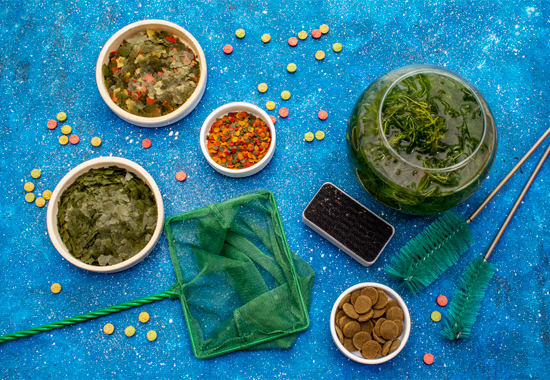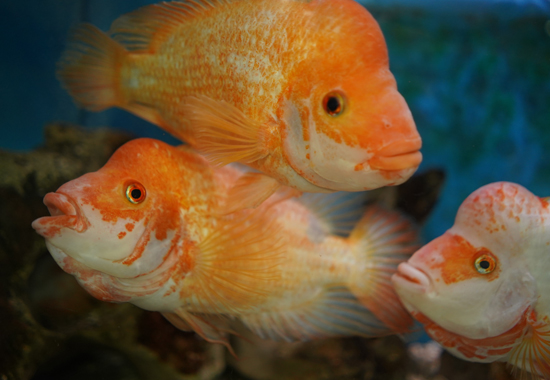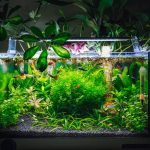Freshwater fish can be affected by many diseases. New fish owners may face difficulty identifying a fish disease. Many factors like poor water quality, stress, diet concerns, overcrowding, and not quarantine fresh new fish will lead to fish disease. You can fix these problems by maintaining your fish tank with care and providing your fish a balanced routine.
If you are taking proper care and hygiene of your aquarium, you can prevent diseases and ensure your success in fish keeping hobby. When your fish gets sick, don't be panic, there are plenty of solutions to treat them.
Here are the five most common diseases in Aquarium
1: Ick Fish disease
Ick or white spot disease is a common freshwater aquarium fish disease. Ich symptoms are white spots on the fish fin, around gills, or even all over the body. Ich can cause your fish death if not treated. Stress is the main factor of the disease in fish. It could be from their environment if they have just arrived at an aquarium store or improper diet. The frequent temperature fluctuations in your fish tank water also cause the outbreak of disease. Fish with Ich scratches its body against objects in a fish tank. They even lose their appetite and hide. Some time new fish owners have no idea about quarantine fish. They buy fish from a fish store and introduce it to their tank without quarantine it. If the newly added fish has this infection, your whole tank will be infected.
Treatment

You can use medication for the disease. Clean your aquarium, perform water changes to get rid of waste. Now take out your activated carbon from the filter as it makes medication treatment ineffective. If you have given your fish medication, wait for 24 hours. Change one-third of aquarium water and again medicate your fish. Repeat this process as prescribed until you see no sign of Ich. Another way to treat these is aquarium salt. Use one tablespoon of aquarium salt for every two gallons of water. Raise the water heat about 84-85 degrees. The salt treatment will take 10-14 days. Let the salt soak and, if you want to change the water, after changing the water, you can add more salt to re-dose.
2: Dropsy fish disease

The main reasons for dropsy in aquarium fish are poor water quality and improper diet. In dropsy, fish looks bloated and lost their colors. It is a bacterial infection, fluid buildup inside body tissues making a fish swell. The infected fish face behavioral changes, get lethargic and lack appetite
Treatment
Remove the sick fish in a hospital tank. If you caught the dropsy symptoms in your fish early, raise the temperature and add aquarium salt. If your fish is in severe condition, then you can use an antibiotic. Add one teaspoon of aquarium salt for every one gallon of water. The salt helps to remove excess salt from the fish body.
3: Fungus disease
Fungal infections are usually less common in fish. Fungus is like white cottony growth on fish. There are many reasons for fungus in aquarium fish, such as stress, poor water condition, and lacking nutrients
Treatment
Clean your aquarium for providing your fish optimal stress-free environment. You can use antifungal medication for treatment. You can also use one tablespoon of aquarium salt for every three gallons of water. Treat your fish for 5-7 days. If your fish does not shows improvement increase the dose of salt to one tablespoon per gallon of water.
4: Ammonia poisoning disease

It is with fish waste especially, in new tanks that haven't completed the nitrogen cycle. Fish moves towards the surface of the water for gasping air. The signs of ammonia poisoning include frayed fins, loss of appetite, and red streaks or burns on fish
Treatment
Lower down ammonia by performing a water change. Test your aquarium water pH and ammonia by using a test kit. Remove the fish to a separate tank and treat it with antibiotics. Treat your fish for 5-7 days until the fish starts to eat normally.
5: Nitrite poisoning fish disease
When the level of nitrite rises, your aquarium fish may face nitrite poisoning. It can cause fish death if not reduced. Fish looks restless, brown gills, gasp at the surface of the water.
Treatment
Immediately perform water changes to lessen the nitrate level. Add one tablespoon of aquarium salt per gallon of water to prevent toxic absorption of nitrate from fish gills. Remove uneaten food from the fish tank and reduce feeding. It is essential to test nitrite level until it falls to zero.
Categories: Fish Diseases, Tags:




